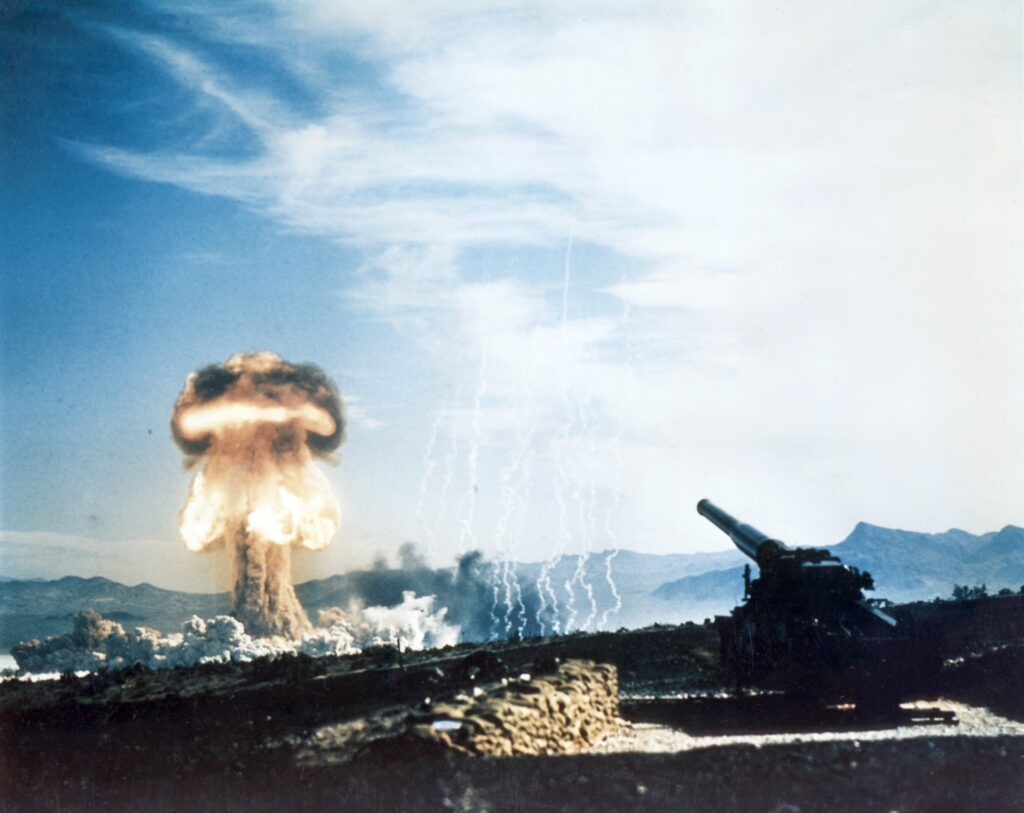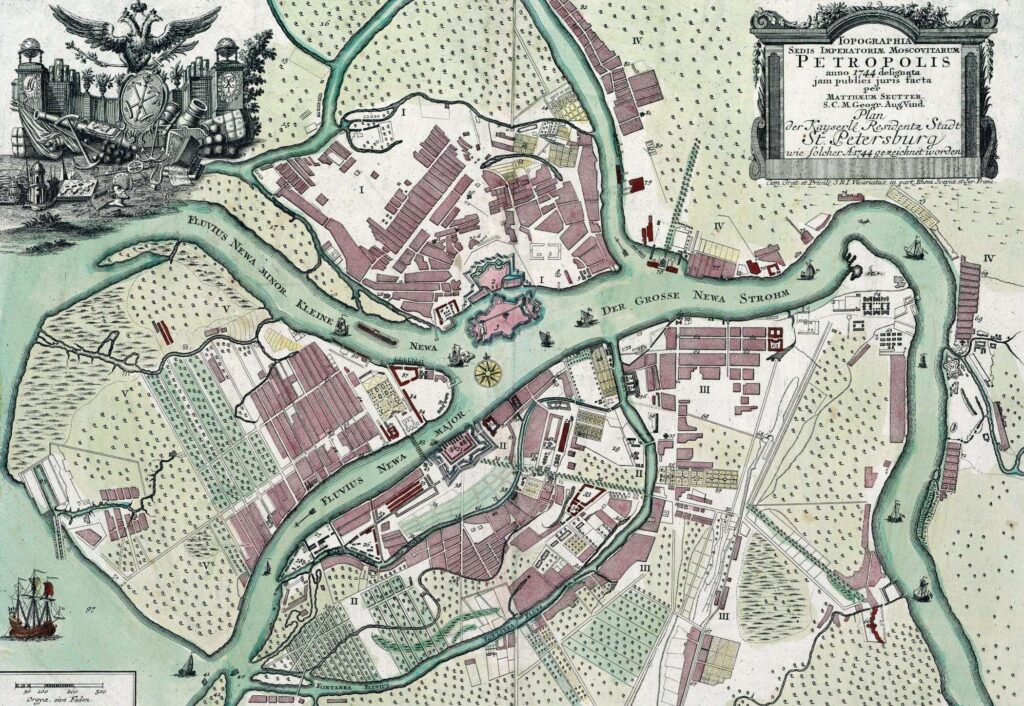This Week in History recalls memorable and decisive events and personalities of the past.
May 25th 1953 – Nuclear weapons testing: At the Nevada Test Site, the United States conducts its first and only nuclear artillery test

The immediate period after the invention and deployment of the first atomic weapons was a time of wild experimentation by the US military. The new weapon seemed to open up endless possibilities and the military sought to explore every avenue for the potential use of nuclear weapons on the battlefield.
It was this thinking that generated the US army’s ‘nuclear artillery’ experiments.
As the missile was still in the early stages of development in 1953, the idea of nuclear artillery was to be able to deploy nuclear weapons at medium range without having to risk a heavy and slow bomber being shot down while attempting to drop the bomb. The artillery would also allow a much easier deployment of nuclear weapons on the battlefield, perhaps during the siege of an enemy strong point.
To test this theory the US constructed a special artillery gun nicknamed ‘Atomic Annie’, which would fire a 280 mm shell carrying a 15 kiloton warhead (about the same as the bomb dropped on Hiroshima).
The gun could fire the shell about 10 km and the shell would explode around 160 metres above the ground to create an air blast and prevent the ground absorbing too much of the blast.
On 15 May 1953 at a test code-named Upshot-Knothole Grable, the US army tested their nuclear artillery for the first – and last – time.
You can watch footage of the test here: https://upload.wikimedia.org/wikipedia/commons/transcoded/a/a0/Operation_Upshot_test.ogv/Operation_Upshot_test.ogv.480p.vp9.webm
The 364kg shell was fired at 625 metres per second at the Nevada nuclear test site, with around 3 200 people in attendance.
Nineteen seconds after being fired, the shell exploded 10km from the gun and about 30 metres from its target and created a precursor shockwave (in addition to the regular shockwave a nuclear blast creates) as a result of the blast reflecting off of the ground.
The US would rethink tactical nuclear warheads after this point and instead would focus on developing short- and medium-range missiles, retiring their nuclear artillery programme.

27th of May 1703 – Tsar Peter the Great founds the city of Saint Petersburg

The area which is today the site of the great city of St Petersburg was originally inhabited by a small Finnic tribe called the Ingarians, the area near the mouth of the river Neva usually being called Ingermanland before the founding of the city. In 1611, when it was under the control of the Swedish Empire, the Swedes built a fortress at the mouth of the Neva, called Nyenskans.
On 12 May 1703, during the Great Northern War between Russia and Sweden, Russian troops led by their tsar, Peter, captured the Swedish fortress. The war was a 21-year conflict that involved a coalition of powers across Europe, including Denmark, Poland and Russia, who united to destroy the supremacy of the Swedish over the Baltic Sea. Russia joined the war not only to contain Swedish power but also to capture land for a port and naval base.
Russia’s main port at the time was the far northern port of Arkhangelsk on the White Sea, which froze over for large parts of the year and was far from other ports. Tsar Peter greatly desired to establish Russia as a naval power, as he had a great personal interest in shipbuilding, and saw the establishment of a powerful Russian navy as a pre-requisite for the emergence of Russia as a great European power.
Peter was also obsessed with bringing Russia, which had long been viewed as backwards by the other European powers, up to modern standards and as such he wanted to establish a new and modern city which could serve as Russia’s capital and help facilitate trade and exchange with Western Europe.
So, when Russian troops captured the Nyenskans fort, Peter decided that the area was perfectly suited to his plans for a new city, naval base and perhaps one day a new great capital of his empire. Just two weeks after capturing the area from the Swedes, Peter laid down the cornerstone of a new fortress on Zayachy island in the estuary of the Neva River, which would become the first stone building of the new city of St Petersburg, named after the patron saint of Tsar Peter, Saint Peter.
To build the city in the swampy environment, Peter conscripted 40 000 serfs a year who had to provide their own tools and travel to the site themselves. The large number of workers was needed because the disease and hazardous conditions of the construction site led to a high rate of mortality among the workers, and thousands are reported to have died in the construction process. Swedish prisoners of war were also used in the construction of the city.

Tsar Peter went to great lengths to ensure enough skills were available by heavily restricting stone construction across his empire, except in St. Petersburg, forcing all stone masons who wanted work to travel to the city. Peter also imported Dutch and German architects to help construct the city, as well as doing everything possible to attract skilled professionals and experts in all subjects from across Russia and Europe.
The city plan included many ambitious ideas which never came to pass, such as having canals instead of roads. As early as 1704, Peter was calling the new city his capital. However, the capital was only moved officially to St Petersburg in 1712, a full nine years before the conclusion of the peace treaty with Sweden, and at a time which Sweden still saw the city as Swedish territory. The city would come to be known as Russia’s ‘window to Europe’, and the high levels of immigration to the city resulted in a cosmopolitan and vibrant culture which helped distinguish St Petersburg from other Russian cities.
The city would go on to flourish and become a major centre of Russian life and culture with numerous palaces and cultural sites that helped to put Russia on the map as a major power.

When the Great Northern War ended in 1721, the Swedes officially ceded this territory to Russia, and – with a only brief interruption between 1728 and 1732 – St Petersburg would remain the capital of Russia until the Soviet government moved it in 1918, as it was too close to anti-communist armies.
If you like what you have just read, support the Daily Friend

